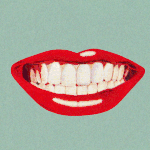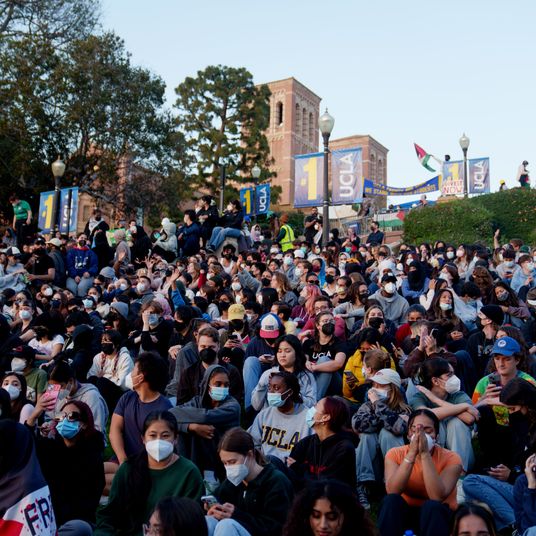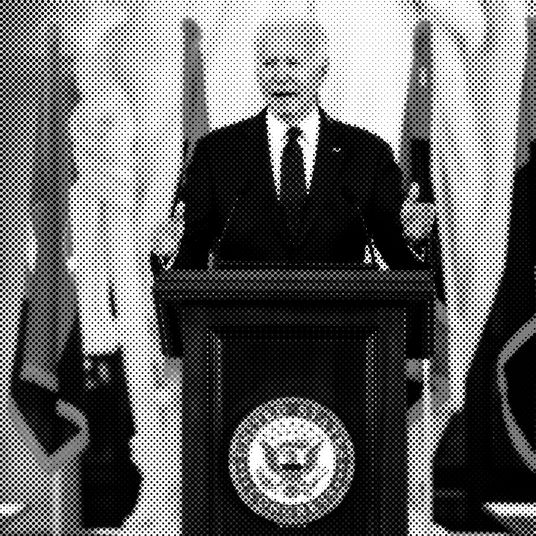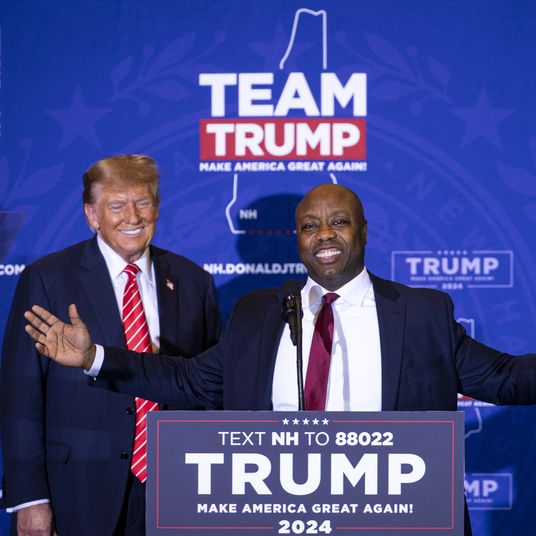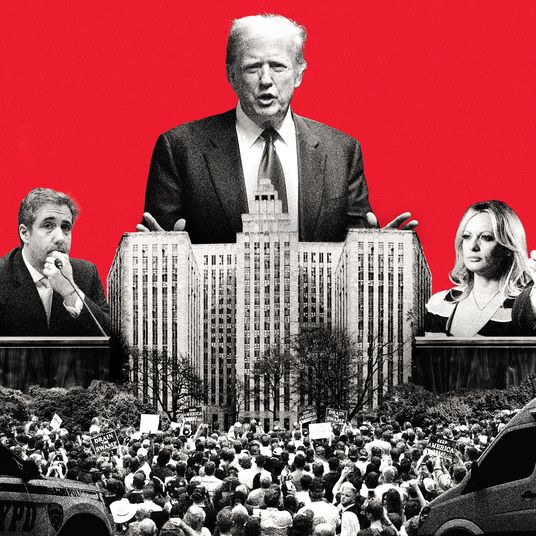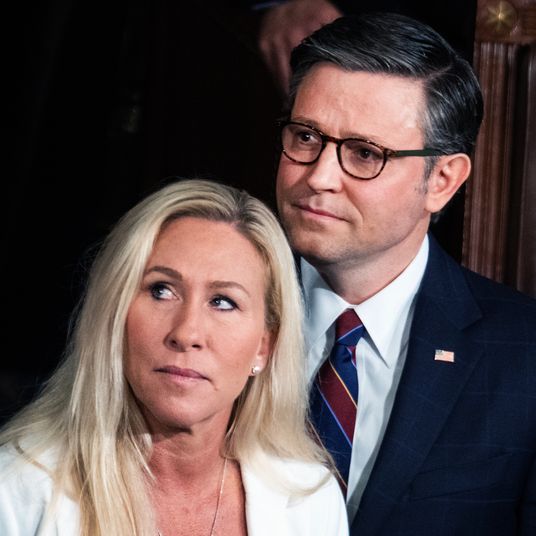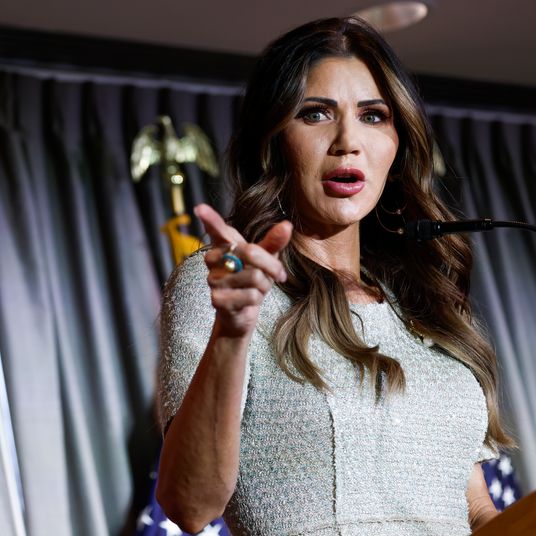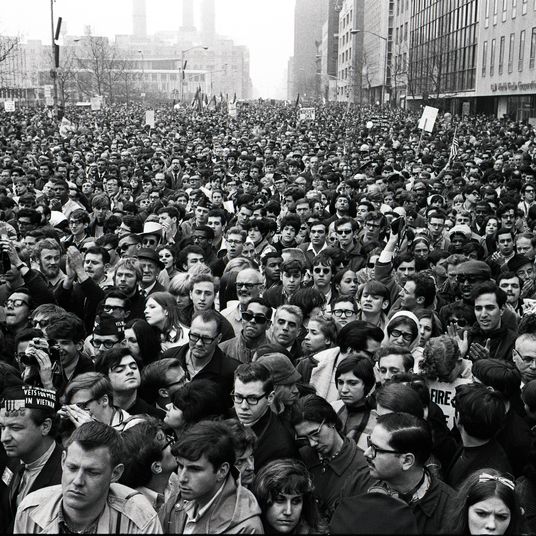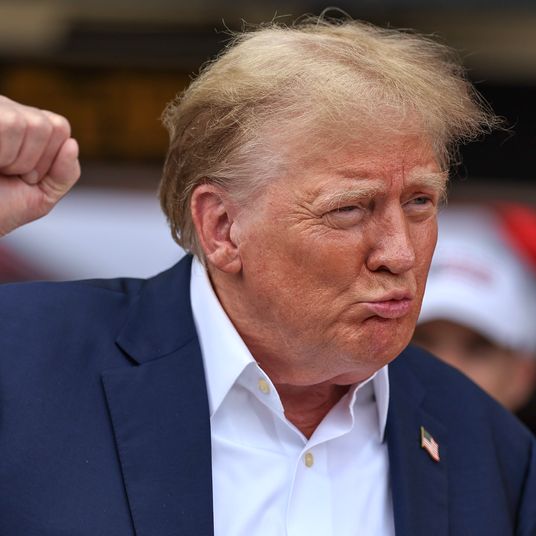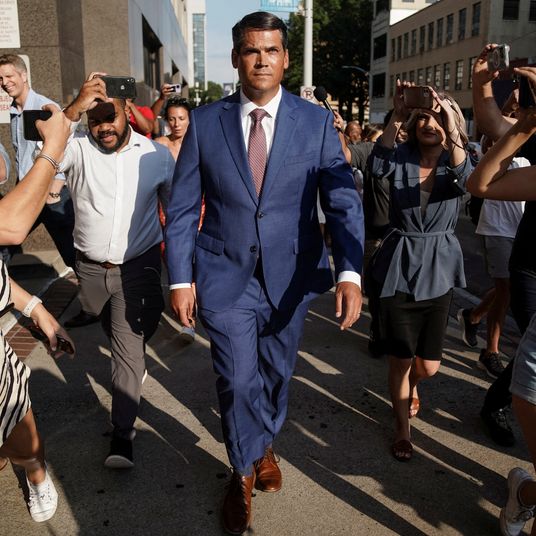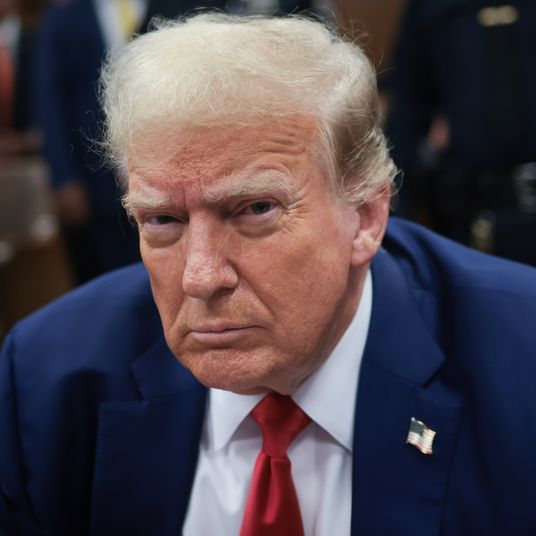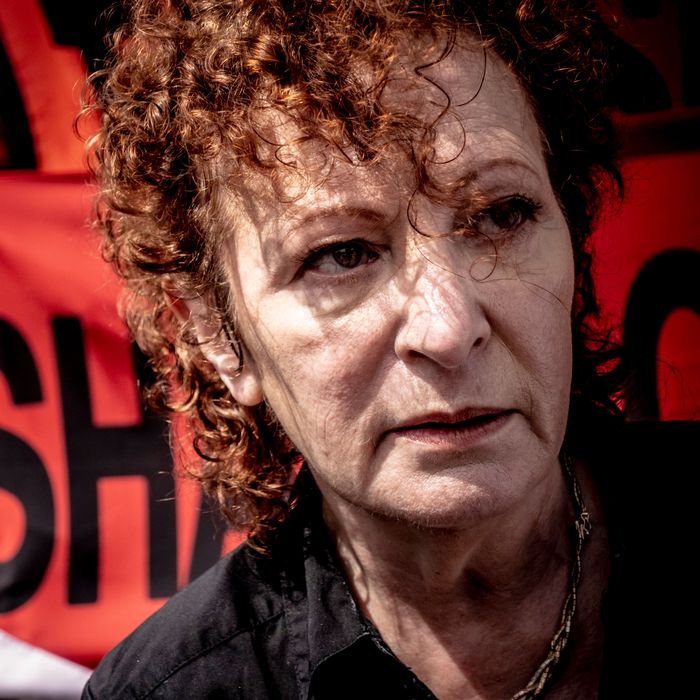
In 2018, the acclaimed photographer Nan Goldin made an admission. In an essay for Artforum, she revealed she developed a substance-use disorder after a physician prescribed her OxyContin for a surgery. “I believe I owe it to those affected by this epidemic to make the personal political,” she wrote. Goldin founded the activist collective PAIN and took on the Sackler name behind Purdue Pharma, the manufacturer of OxyContin, which has been blamed for sparking the opioid epidemic.
Goldin and fellow activists have since staged protests at museums across the world bearing the names of Sackler family members who made a fortune from Purdue Pharma. At the Met, they staged die-ins, carried banners, floated empty pill bottles into the reflecting pool at the Temple of Dendur. As living symbols of a crisis in motion, they are protesting members of the Sackler family, once known for its largesse and now for something else altogether.
On Wednesday, U.S. bankruptcy court judge Robert Drain conditionally approved a settlement plan that “largely absolves” members of the Sackler family “of Purdue opioid-related liability,” the New York Times reported. (The Sacklers have not been charged with a crime and deny they are responsible for any wrongdoing.) Under the terms of the settlement, Purdue Pharma itself is dissolved and, according to the Times, members of the Sackler family also “agreed to turn over $4.5 billion, including federal settlement fees, paid in installments over roughly nine years.” Nevertheless, the Sacklers remain an exceedingly wealthy family. Nine states objected to the plan, and in the weeks leading up to the ruling, activists like Goldin said the settlement doesn’t go far enough, and that it lets the wealthy Sacklers off the hook. Justice for survivors of the opioid crisis may not arrive in a courtroom, administered by a judge.
Goldin spoke with Intelligencer ahead of the settlement plan’s approval about what true justice requires and why she and PAIN aren’t done with the Sackler name yet.
For those who might not be familiar with it, how would you explain PAIN and its origins?
So PAIN started after I read Patrick Radden Keefe’s article in The New Yorker, and I became incensed that this name that I always believed was related to philanthropy in the museums was actually the name of a part of a drug empire. I brought friends and assistants and activists into this group that was meeting every week in my living room. Our focus was on shaming the Sacklers. I thought, well, they live in their museums. That’s what they care about. So that’s where I chose to focus, and also because I’m in the collections of many of these museums.
We started doing actions a year into it, beginning at the Met. After I declared in the media that I wouldn’t do the retrospective planned at the National Portrait Gallery in London, they refused a million dollars from the Sacklers. Then within days, the Tate, the Guggenheim, and then a month later, the Met, all recently announced that they were refusing future funding. No one gave money back, and only the Louvre and Tufts have taken down the name, and Edinburgh, I believe, have wiped off the Sackler name.
What’s the strategy behind the actions — the deliberative process?
It’s a group effort. There’s a designer and a brilliant graphic artist in the group who designed the bottles that have a fake prescription on the front. They are pill bottles with prescriptions on them that says OxyContin, prescribed by Purdue, and side effect, death. We try to utilize the architecture of each building that we’re going to. So at the Met, we threw bottles into the Nile down the Temple of Dendur. It was about a thousand bottles bobbing in the water.
Then at the Guggenheim, we used the atrium to unleash a blizzard of prescriptions. At the V&A, we use the courtyard that was paid for by the Sacklers. In each one, we do a die-in as well. So we sit around and we bounce off each other, and that’s how we get to our ideas. Then we plan the actions and how to bring something like bottles into the actual interior.
And are you drawing from earlier protest movements?
Always ACT UP is the model. I was around in the days of ACT UP, and I was part of their protests, although not as actively involved as I wish I had been. I feel like everyone has to find a fight in these days that are so dark, and I realized that what I knew best is opioid addiction. So the overdose crisis is where I chose to fight. We’re not anti-opioid; we’re anti-profiteers.
What consequences, if any, have there been for you as you’ve pursued this activism?
We had a PI following us for a while. He was parked outside my apartment, and my assistant Megan spotted a man sitting in a car with the lights on, and then she saw the same car in her neighborhood, and the man took a picture of her. Then the same car came back and parked in front of my house. It was very frightening.
What do you hope the Sackler name comes to signify?
I want the Sackler name to be synonymous with the opioid crisis. And I think to a certain amount of the public, it has. I think people are now outraged when they go to a museum and see their name. We hope that no museum allows their name to stay on their institution.
What’s been going through your mind as this bankruptcy process wears on?
We entered the court as a small group called the Ad Hoc Committee of Accountability. It’s me and five parents who’ve lost their children to OxyContin overdose. We’re asking for accountability, and we’re demanding that all their money be used to abate the opioid crisis, not $4 billion out of $11 billion. And the documents, the un-redacted documents.
It’s been a real lesson in the corruption of this country to watch this court, that billionaires have a different justice systems than the rest of us, and that they can actually walk away unscathed. The biggest drug cartel in America is going to walk away with no consequences, and a huge amount of incarcerated people are there because of small drug crimes. Possession, selling, and they’re in jail for 6 years, 10 years, 15 years for small amounts of drugs. This company was responsible for igniting the overdose crisis, which has now cost 800,000 lives, and they are going to walk away free.
Do you feel as though survivors have been heard adequately throughout this process?
No, not at all. The creditors are going to get a very small amount of money, and only in the cases where they had actual prescription for OxyContin from Purdue, and thousands of the creditors did not have that because the streets were flooded with Oxy. So a lot of people got addicted from the street supplies. The amount of money that’s going to victims is like 3,000 to about 40,000. It’s not enough for a funeral for many of these people’s loved ones.
No, the people will never be heard. That’s why our Ad Hoc Committee entered the court, and we’ve testified in Congress. There’s been all these congressional hearings about the Sacklers, but nothing seems to move the judge.
What, then, does justice look like for the Sacklers outside this bankruptcy court?
Well, a big issue for us is the museums taking down their name. We ruined their reputation, which was of utmost importance to them. I think the only thing we have now is public outrage and activism. But they’re getting away with impunity from any future civil cases forever, for anything having to do with the opioid crisis. That includes a thousand names of their friends, and lawyers, and companies, and heirs. That’s one of the most upsetting things to us. They should be tried in a criminal court, though I don’t believe in incarceration.
We’re very concerned about where the money that the states are getting is going to go. Is it more police? Or is it treatments that don’t work, because complete abstinence rarely works for opiate addiction.
What does the future look like for PAIN?
We’re going to continue. We’re going to push the museums to take down their names, and universities, too. The museums are supposed to be cultural repositories meant to have an ethical mandate, and having their names now, when the Sacklers have so much blood on their hands, is an outrage. They’re banking off the stigma of addiction, off opioid-use disorder, and that’s how they’ve gotten away with it, bottom line. The Sacklers called the users of their drugs criminals, and that they had to be hammered on. The stigma goes very deep in this society about drug users. The Sacklers are the criminals. We’re increasingly working with harm-reduction groups for changes to drug policies and an end to the war on drugs.
What do you think it says about the state of the country that something like the opioid crisis can happen in the way that it’s happened, and that a family like the Sacklers can effectively get away with their role in it?
It shows this justice system, the weight of this justice system, and it shows the billionaires are running the country, and they have complete impunity from the laws of the nation.
This interview has been edited for length and clarity.





